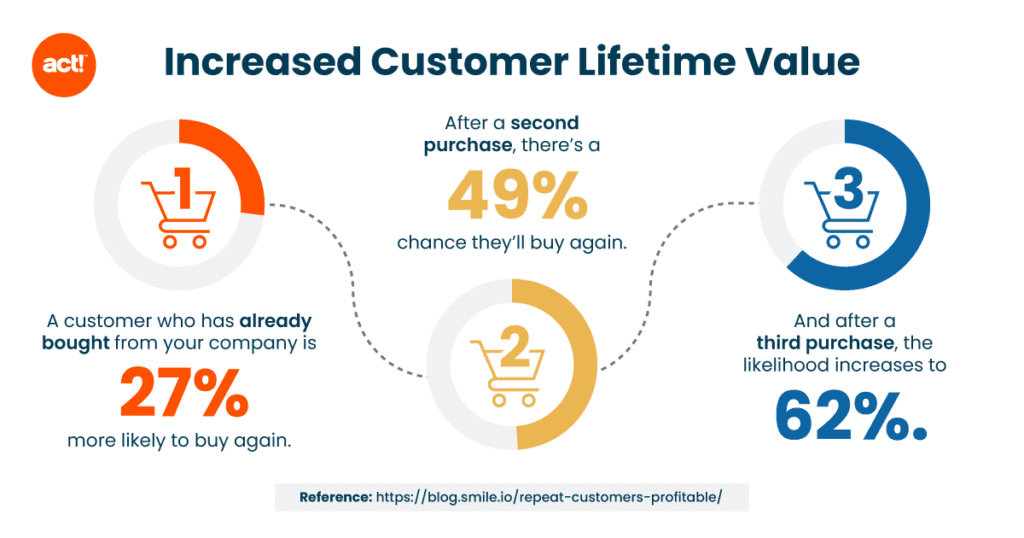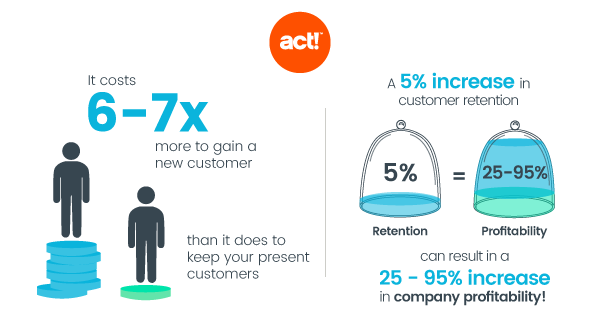
If you’ve ever sold a product or service to another business, you know how challenging it can be to secure that first sale. It often requires multiple follow-ups, meetings, and demos to convince a customer to buy your product.
What separates successful companies from their competitors is their ability to retain customers and leverage initial trust to build long-lasting relationships.
This is what customer retention is all about.
In this article, we’ll discuss the benefits of customer retention for your business and share proven strategies to boost retention rates.
Customer retention refers to the strategies businesses use to ensure clients stay with them longer, renew their service contracts, and do not defect to a competitor.
Successful businesses start retention activities from the day they acquire a new client. By offering memorable experiences, overdelivering value, and prioritizing problem resolution, businesses ensure they become an irreplaceable part of their client’s success recipe.
All this effort isn’t without reason.
According to Wharton University, the probability of selling to an existing customer is up to 14 times higher than the likelihood of selling to a new customer. Studies also found that the inability to retain customers collectively costs US businesses $136 billion annually.
It makes sense.
The longer a customer stays with your company, the more they’ll spend on your products and services, increasing their lifetime value (LTV or CLV) and reducing your costs for acquiring new business.
Loyal customers are invaluable assets to your brand. By providing value and excellent service, you not only retain these customers but also turn them into brand advocates who influence the purchase decisions of their friends and family.
Recognizing this potential, organizations invest billions of dollars in strategies to enhance customer loyalty. Studies show that the global customer loyalty management market size is expected to reach $13.31 billion by the end of 2024.
Let’s take a closer look at the ways your brand can benefit from increased customer loyalty and retention.
Key metrics from research show that a customer who has already bought from your company is 27 percent more likely to buy again. After a second purchase, there’s a 49 percent chance they’ll buy again. And after a third purchase, the likelihood increases to 62 percent.
In other words, the longer they stay, the more they buy.
Over 39 percent of customers are willing to spend more with a brand they’re loyal to, even if there are cheaper options elsewhere.
Retaining customers longer has a direct impact on your bottom line. According to Bain & Company, increasing customer retention rates by 5 percent increases profits by 25 percent.
Nielsen published a research study in early 2024 that shows 89 percent of US consumers trust word of mouth in their purchase decisions. Now combine this with the fact that 60 percent of consumers say they regularly tell their friends and family about the brands they love.
In short, word of mouth from loyal customers can be a significant source of referral leads, customers, and business opportunities.

Customer acquisition and retention aren’t mutually exclusive.
Companies that regularly acquire new customers while retaining their existing ones, grow significantly faster than businesses that focus only on sales.
So, ideally, you should be doing both. But if you had to prioritize one over the other, retention should always win the race.
Why? Customer retention not only drives sales through word of mouth, but it is also more cost-effective and profitable. Your current customers are more focused on your product’s value than price because they’ve already experienced it.
In addition, existing customers provide excellent insights for continuous improvement, giving your organization a competitive advantage in the marketplace.
That’s not to downplay the significance of new acquisitions—they’re critical for growth. Yet, retention is equally important—if not more so—for your business.

If you want to improve your customer retention rate, you must calculate it first. Once you know your existing client retention rate, you can set quarterly, semi-annual, or annual targets to improve it.
Here’s how the customer retention rate is calculated for any given period.
Customer Retention Rate Formula: ((E – N) / S ) x 100
For example, if you had 300 customers at the beginning of 2023 (S), 350 customers at the end of 2023 (E), and you acquired 150 new customers during 2023, your retention rate would be:
((350-150)/300) x 100 = 66.67 percent
That’s a retention rate of 66.67 percent in 2023.
You can use the same formula to calculate your customer retention rate for any given period.
Start your 14 day free trial today. No download or credit card required.
When customers leave your company for another, it’s called churn. Successful retention strategies reduce customer churn rates and encourage repeat business from existing customers.
Here are six ways to retain customers and improve your business’s long-term prospects.
Customers invest in your product or service to solve specific problems. To retain customers and turn them into loyalists, you must exceed their expectations by providing exceptional value for the money.
Surprise your customers with bonuses and additional value on top of everything you had promised at the time of sale. Make them feel special and show them you’re fully committed to their success.
No discount offer or customer service experience can compensate for a bad product. So make sure your product delivers on its promise.
You can only create memorable customer experiences when you understand customer behavior and engagement patterns with your product.
This is why it is critical to invest in an integrated customer relationship management (CRM) system like that helps you handle everything from lead generation to communication, and customer data management by giving you a singular dashboard view of your customer’s engagement with your product and customer support teams.
It tracks the complete customer journey, shows how clients use your product and helps you understand their challenges.
It also helps you identify dormant users and customers who’ve lost interest in your product, which is a strong indicator of dissatisfaction.
Without such a system, you won’t have the required insights to find or resolve customer issues.
Customer success is a critical part of any client retention strategy. It simply means that instead of focusing solely on your product’s performance, you do everything you can to ensure your customers achieve their business goals with your product.
This is where customer education comes in.
You must create helpful onboarding content, product tutorials, and business strategy guides that not only show your customers how to use your product to its full potential but also share different strategies to achieve their business goals.
For example, an e-commerce email marketing company can create content about the different email sequences online stores and e-commerce brands should use to engage their customers and drive sales.
You can automate this process and schedule emails that cover various aspects of your product and sharing business tips throughout the customer lifecycle.
Ignoring dormant users and reaching out to them only at the time of service renewal is a common business mistake.
Don’t leave your customers helpless after they give you their money. Help them use your product to its full potential, and proactively reach out to anyone who disengages. For instance, you can use a CRM and marketing automation platform to schedule automated emails for anyone who doesn’t sign in or contact you for a specified period.
You can also manually identify such users from your CRM dashboard with different search filters, ensuring no customer is left unattended.
Personalization helps customers use your product more effectively and achieve their business goals faster.
For example, a freelance writer’s requirements from a project management tool are drastically different from those of a design agency owner. By learning about the user’s goals, you can recommend the most relevant methodology, templates, and content.
With a CRM, you can personalize customer education by segmenting your users according to their industries and sending them the most relevant content.
Listening to customer feedback helps you improve your product, increase user satisfaction, and boost retention.
Research shows that 83 percent of customers feel more loyal to a brand that listens to their feedback and resolves their issues.
A CRM does more than just help you gather customer feedback through forms and various touchpoints; it gives you a centralized system to ensure no customer query remains unanswered. It also provides a 360-degree view of customer issues and empowers your support teams with the context to offer the best solutions.
Acquiring new customers with innovative sales and marketing strategies is critical for your business. But tracking customer retention rates and building a loyal customer base is equally important.
With a powerful, all-in-one CRM and marketing automation solution like Act!, you can easily streamline your customer engagement, consistently meet expectations, increase brand loyalty, and enjoy those ever-important repeat purchases.
Try it free for 14 days.
Customer loyalty results from consistent positive brand experiences. It shows a customer’s willingness to return to a company for repeat business.
A loyalty program offers rewards, discounts, and other incentives to encourage customers to stay longer with a business. These programs aim to increase customer retention and build long-term customer loyalty.
Businesses can implement the following strategies to improve customer retention:
Start your 14 day free trial today. No download or credit card required.